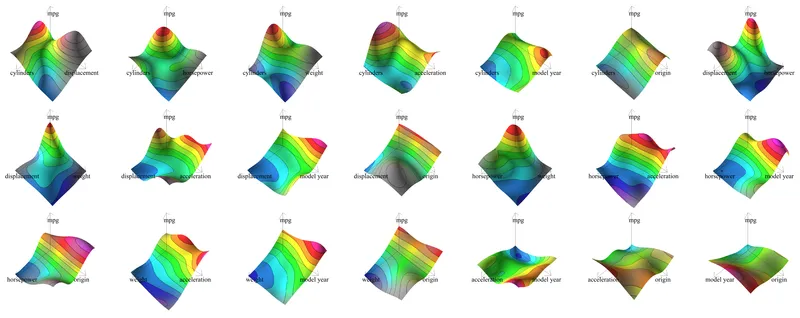Progressive High-Quality Response Surfaces for Visually Guided Sensitivity Analysis
Ismail Demir, Rüdiger Westermann
Computer Graphics and Visualization Group, Technische Universität München, Germany

Background
In this paper we present a technique which allows us to perform high quality and progressive response surface prediction from multidimensional input samples in an efficient manner. We utilize kriging interpolation to estimate a response surface which minimizes the expectation value and variance of the prediction error. High computational efficiency is achieved by employing parallel matrix and vector operations on the GPU. Our approach differs from previous kriging approaches in that it uses a novel progressive updating scheme for new samples based on blockwise matrix inversion. In this way we can handle very large sample sets to which new samples are continually added. Furthermore, we can monitor the incremental evolution of the surface, providing a means to early terminate the computation when no significant changes have occurred. When the generation of input samples is fast enough, our technique enables steering this generation process interactively to find relevant dependency relations.
Acknowledgment
This work was supported by the European Union under the ERC Advanced Grant 291372 - SaferVis - Uncertainty Visualization for Reliable Data Discovery.